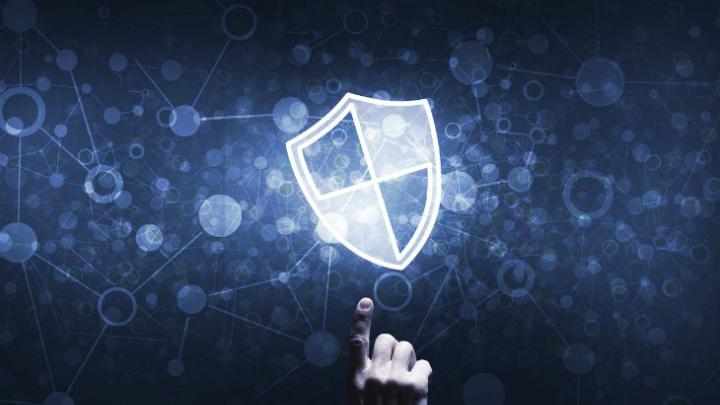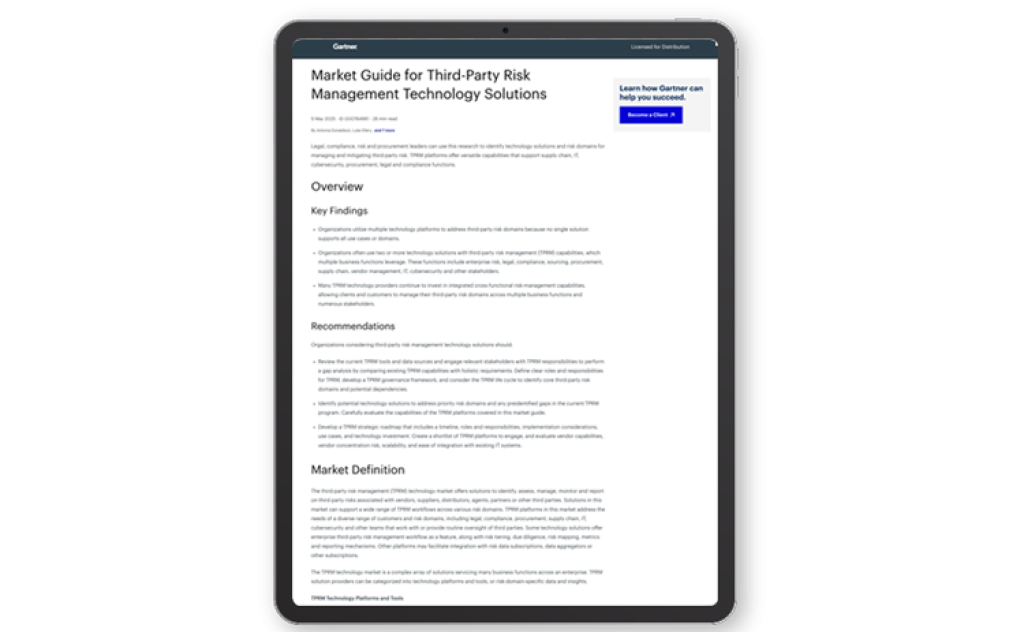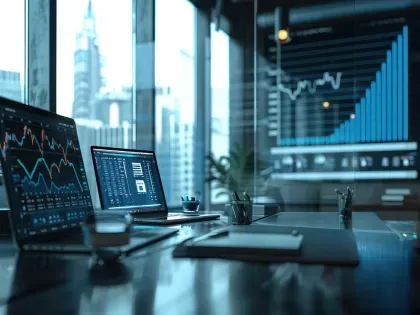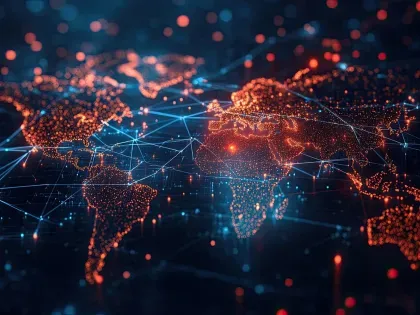The next-gen TPRM platform isn’t just a checklist engine. It’s AI-ready, lifecycle-aware, and GRC-integrated. Learn what matters in your next vendor eval and how today’s leaders are prepping for tomorrow’s risk.
Continuous Security Monitoring: 5 Key Components


What is Continuous Monitoring?
Continuous monitoring in cybersecurity refers to the ongoing, automated process of assessing and analyzing an organization's security posture to detect vulnerabilities, misconfigurations, and emerging threats in real time. Unlike traditional point-in-time assessments, continuous monitoring provides a dynamic view of security risks, enabling organizations to respond promptly to potential issues. This approach is crucial in today's threat landscape, where cyberattacks can exploit weaknesses within minutes. Monitoring solutions may track activity on networks as well as endpoints like individual laptops, mobile phones, desktop computers, and IoT devices.
By implementing continuous monitoring practices, organizations can maintain a real-time understanding of their security posture, prioritize remediation efforts effectively, and foster a culture of proactive cybersecurity management. This strategy not only enhances an organization's resilience against cyber threats but also builds trust with stakeholders by demonstrating a commitment to maintaining high security standards.
3 Ways Data Can Be Compromised
Utilizing a continuous security monitoring strategy can give your security team higher visibility into your threat landscape. To get the most value when investing in continuous monitoring, you first need to understand how data can be compromised:
- External attacks (i.e., bad actors breaking into your network from the outside)
- Insider attacks (i.e., trusted employees or company insiders either willingly or unknowingly becoming the source of data loss, theft, or compromise)
- Supply chain or third-party ecosystem attacks (i.e., vendors that have access to your most critical data becoming the source of data loss, theft, or compromise)
Cybersecurity is an often-discussed topic in boardrooms and C-suites around the world. The alternative to a continuously monitored organization is to be a “compliance-focused” organization—but as we’ve said before, compliance does not equal security.
Therefore, it’s safe to say that having a continuous monitoring strategy is not just a best practice or a competitive differentiator; it’s simply necessary to operate a successful business. And while the criticality of continuous security monitoring cannot be understated, the process of building a successful continuous monitoring plan isn’t simple.
5 Components of a Continuous Monitoring Plan
1. Identify the data you want to protect
There’s only so much time and resources you can devote to cybersecurity, especially given the budget pressure and increasing number of cyber threats that security teams are facing.
First, decide which data and infrastructure are crucial for your organization to operate efficiently. Identifying this from the outset will help you better articulate your continuous security monitoring strategy.
2. Create a process for patching security vulnerabilities regularly
Stay aware of vulnerabilities in your network settings or software applications you are using. If you stay on top of your current security posture and what kinds of malware are rampant throughout your industry, you’ll be able to more quickly patch vulnerabilities when they occur.
3. Ensure that you’re continuously monitoring all of your endpoints
When someone from the outside is trying to gain illicit access to your data, they may, for example, send a spear-phishing email to employees.
This is a great example of why endpoint security—including desktops, laptops, servers, and other things of this nature—is so critical.
If one of your company’s employees was to then click on a spear-phishing link and malware was deployed on your system, you’d be able to address it quickly and securely. Remember: the longer cyber attacks sit on your system, the more likely it is that your data will be compromised.
4. Create a process for continuously identifying changes in standard user behavior from within your organization
Security measures for potential insider threats are also important to guard with continuous security monitoring. First, you must set a baseline for standard user behavior across your organization. You must understand how most employees usually engage with applications and data in your network.
Can you identify what a typical workday is like for your employees? Or how engaged they are with applications and data in your network? If not, you should begin working on creating metrics and gathering data on these subjects.
Once you’re able to do so, you can better create a process to identify any suspicious changes in behavior that could indicate a potential security threat. Another thing to consider here is whether or not you’ve limited privileges to your most critical data.
5. Put continuous security monitoring software in place to monitor your third parties
There are many tools and techniques companies today use to continuously monitor how potential security threats get into their network. You can monitor at the firewall or across all of your endpoints to identify malicious code, but what about data that doesn’t sit in your environment?
Has your organization tried to understand their attack surface? It is, of course, also critical to look outside of your organization and use continuous security monitoring for your third parties.
Using a tool like Bitsight Vendor Risk Management (VRM) enables your team to immediately and automatically expose third-party cyber risk during the onboarding process and throughout the vendor lifecycle.
You can also use Bitsight to get an idea of a potential vendor’s cybersecurity posture before you begin working with that company or before it gains access to your sensitive data.
How Continuous Monitoring Enhances Security Posture
Continuously monitoring your vendors offers several critical advantages compared to the point-in-time nature of annual assessments.
- Faster identification of threats. By continuously monitoring the risk posed by third-party vendors, CIOs can immediately take action when a vendor vulnerability is detected. Continuous monitoring enables a proactive approach, triggering action based on changes in a vendor's security rating.
- Customized assessments. While annual assessments treat all vendors as the same, continuous monitoring lets CIOs tailor the cadence of reviews to the risk posed by each vendor. This saves significant time and resources for the vendors you do want to assess, instead of spreading resources to evaluate all vendors.
- An objective lens. Continuous monitoring using objective data provides context for the self-assessments that vendors complete, allowing CIOs to verify the accuracy of vendors' assessments.
- Faster onboarding. Continuous monitoring reduces the time and cost required to onboard vendors, allowing organizations to see value from vendors sooner.
Extending Cyber Security Monitoring to the Dark Web
Cyber security monitoring is essential for protecting your organization from threats. By continuously observing activity within your network – on endpoints and on websites and web applications – cyber security monitoring enables your security teams detect suspicious behavior and take action against threats before they become significant security incidents.
While uncovering threats and detecting intrusions as they happen can help to stop attacks, identifying threats before they happen provides even greater security.
Monitoring of dark web sources
Most cyber security monitoring solutions provide continuous monitoring of networks and devices like laptops, desktops, mobile phones and Internet of Things (IoT) devices. These technologies are designed to detect suspicious activity, monitor unusual traffic, spot questionable behavior, warn about strange logins, identify vulnerabilities, and flag performance issues that may indicate an intrusion.
By detecting problems earlier, cyber security monitoring technologies can help security teams to mitigate threats, minimize damage, address vulnerabilities, reduce downtime, and ensure legal compliance with regulatory frameworks. Third-party monitoring solutions help organizations to improve security by tracking the security posture of vendors and mitigating threats within the supply chain.
To proactively prevent attacks, security teams need cyber threat intelligence that can tip them off to emerging attacks, IOCs and the latest tactics, techniques and procedures (TTPs) that attackers are deploying.
Dark web cyber security monitoring solutions provide this intelligence by tracking activity on websites on the deep and dark web – the places where threat actors gather to communicate and do business. Dark web forums, underground marketplaces, and code repositories are the sites where threat actors discuss methods, share information, buy and sell data, and acquire the tools they need to carry out attacks. By covertly monitoring these difficult-to-access sites, security teams can gain invaluable intelligence about threats in the making, allowing them to take action to block these attacks well before they are launched.
Summary
The point of continuous security monitoring of your information is to protect your organization’s most sensitive data.This is about knowing what that data is, where that data is stored, and who has access to that data is simply imperative. Beyond that, you have to consider what steps to put in place to reduce privileges to that data and how to protect that data wherever it lives.
This is particularly critical when your data lives outside of your organization. By putting a continuous monitoring plan in place, you will hold your vendors accountable for their actions and make it crystal clear what standards you expect them to uphold.



